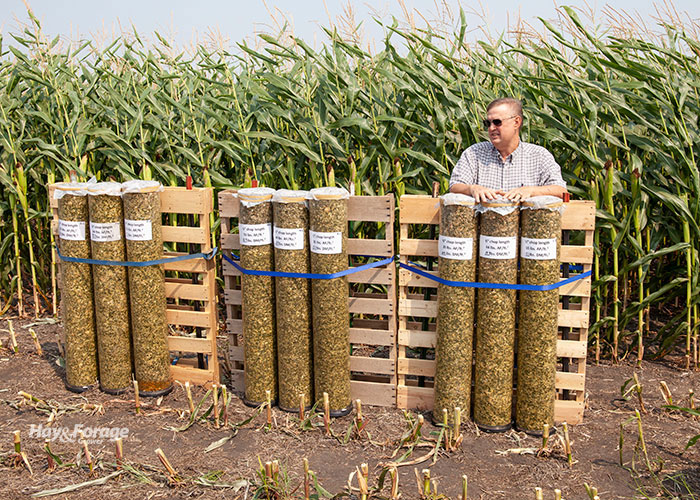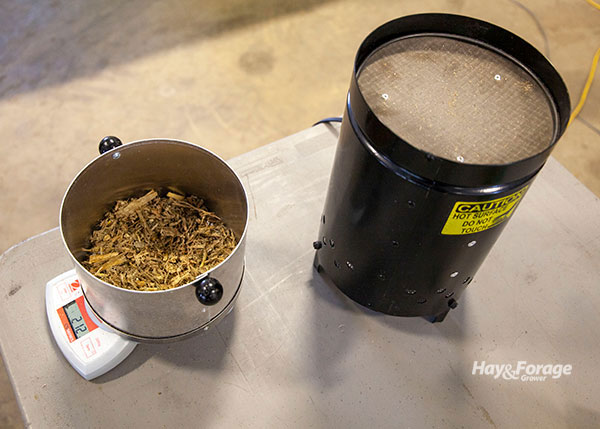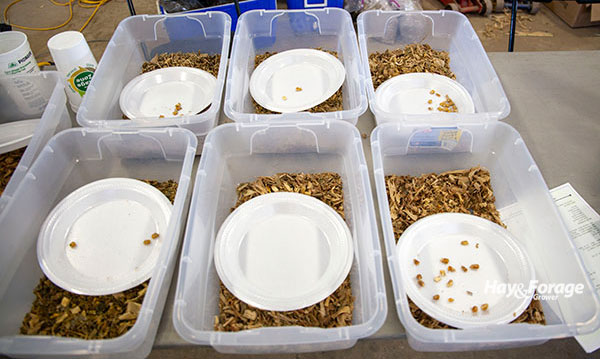Wet silage will hurt more this year |
| By Mike Rankin, Managing Editor |
|
|
 Editor’s note: This is the second of a two-part series on executing a successful corn silage harvesting season. Part 1 appeared in last week’s issue of eHay Weekly. Harvesting corn silage at the right moisture is always important, but it may be just a little bit more important in 2021. “This won’t be the year to put up extremely wet corn silage,” said Mike Brouk. The extension dairy nutrition specialist at Kansas State University was talking to attendees at a forage field day held in Beresford, S.D. Brouk recommended harvesting corn silage between 35% and 38% dry matter. He noted that producers need to avoid harvesting at less than 30% dry matter to reduce the risk of clostridial fermentation and maximize starch concentrations. “Some of the best dairies I work with are checking kernel processing and measuring dry matter every hour during harvest,” Brouk related. “I prefer using a Koster tester with a timer for monitoring moisture, but a microwave works as well. There are also some new handheld infrared technologies that show promise,” he added.  A Koster Tester, plugged into a timer, is Brouk’s preferred method for on-farm moisture testing. “With high corn prices, it’s important that we harvest as much starch as we can,” Brouk said. “About 65% of the energy in corn silage comes from the grain. For this reason, I would wait as long as possible to harvest while still having an acceptable whole-plant moisture. I see a lot of analyses at 30% to 32% starch, and that usually means it was harvested way too early. I think we can push to about 38% dry matter and still be okay,” he theorized. Keep starch out of manure With less kernel damage, more starch escapes the animal’s rumen and digestive tract. Brouk told attendees that if they’re not yet a believer in kernel processing, then have a fecal starch test done. “With $6.50 corn, we ought to know how much starch we’re essentially spreading back on to our fields,” Brouk said. “Kernel processing is a big deal because we want starch that will be utilized in the rumen. As corn matures, there is an increased need for good kernel processing. If we want to push starch concentrations, we must process those kernels.” Brouk exclaimed that one indispensable tool of the silage-making trade is a 32-ounce plastic cup. “Fill it up with fresh-chopped corn, dump it out on a flat surface, and check for kernels that are half in size or more. Two or less is excellent, two to four is adequate, and five or more means some adjustments to the processor need to be made. Every hour that silage is being chopped, someone needs to be using the cup. That’s the time you can make a difference. The labor investment is pretty small compared to what a poor job of kernel processing will cost,” he added.  Counting half and whole kernels from these farm silage samples yielded a wide range of results. There should be no more than four such kernels in a 32-ounce cup sample. Pack it in Delivering a crop to the bunker or pile that is the right moisture and with adequately processed kernels is a big part of the silage-making process. However, the job isn’t complete until it’s packed and covered. To ensure a good pack, Brouk said that a good place to begin is using the rule of 800 pounds of tractor weight for every ton of silage that is delivered in one hour. So, one 60,000-pound tractor weight equates to about 75 tons per hour. “You have to figure out ahead of time how many tons per hour are going to be delivered and ensure you have enough packing weight to deal with it,” Brouk noted. “Get the packing tractors as heavy as you can get them with extra weights.” A good pack requires that thin layers of 4 to 6 inches be formed during the fill and that those layers be adequately packed in a progressive fashion. For piles, strive for 30-degree slopes on the sides and front. The extension specialist said that spending hours packing after the pile is complete does little good other than to pack about the top 6 inches. The packing money is made during delivery to the silo. Once packing is complete, Brouk is a believer in using an oxygen barrier plastic to reduce surface spoilage. “Doing a good job with your corn silage is not just about minimizing dry matter losses,” Brouk explained. “It’s also about getting better quality silage, and the two usually go hand in hand. The result will be more milk per cow or gain per day from a given amount of silage,” he concluded. |
